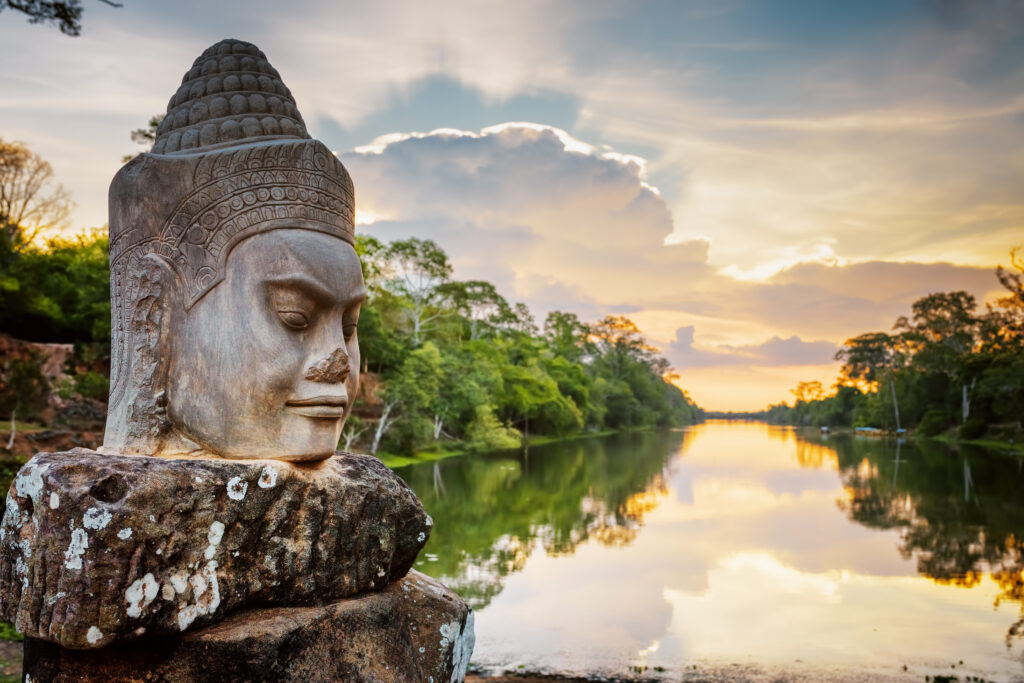
Cambodia, a cultural gem nestled in the heart of Southeast Asia, offers travelers an immersive experience combining millennia of history, enchanting spirituality and breathtaking scenery. From the majestic remains of Angkor to the serene shores of Lake Tonle Sap and the paradisiacal beaches of the coastline, the Khmer kingdom unfolds its varied charms and invites adventurers to an unforgettable exploration. In this article, we reveal the 15 most beautiful places to visit in Cambodia, a meticulous selection that will transport you from emblematic temples to unspoilt natural treasures, offering a captivating itinerary through this country imbued with incomparable cultural richness and natural beauty. Prepare to be amazed by the dazzling diversity ofthis destination which, beyond its glorious past, continues to fascinate travellers from all over the world.
1. Angkor Wat, symbol of Khmer architecture
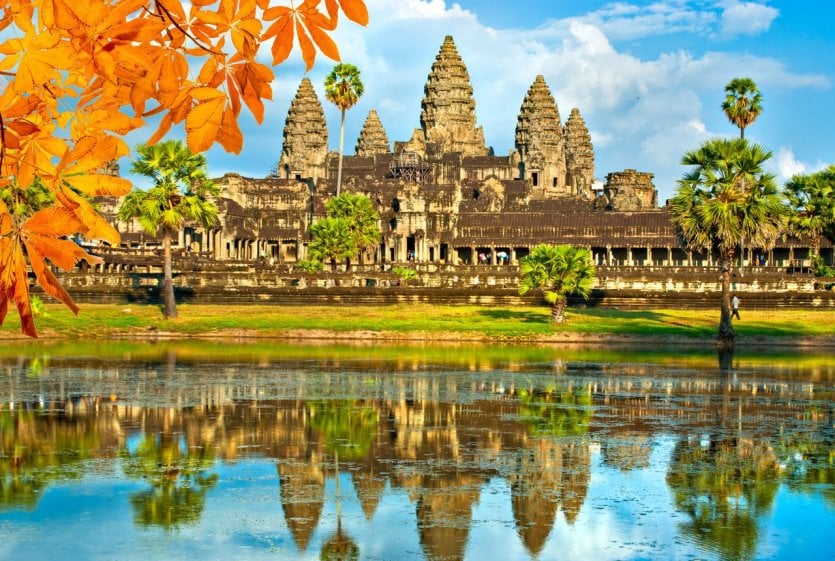
If you had to see only one, despite the crowds of tourists, it would obviously be this one: Angkor Wat is Cambodia's most famous temple, one of the symbols of the culmination of Khmer architecture. Built in the first half of the 12thcentury , under the reign of Suryavarman II, it is dedicated to Vishnu. The entire city of Angkor is a UNESCO World Heritage Site, but Angkor Wat is certainly the best-preserved temple on the site, which is considered one of the wonders of the world.
We particularly recommend visiting Angkor Wart early in the morning to avoid the crowds. Book your guided tour of Angkor Wat at sun rise here : an unforgettable experience you won't soon forget!
2. What to do in Cambodia Visit Ta Prohm temple
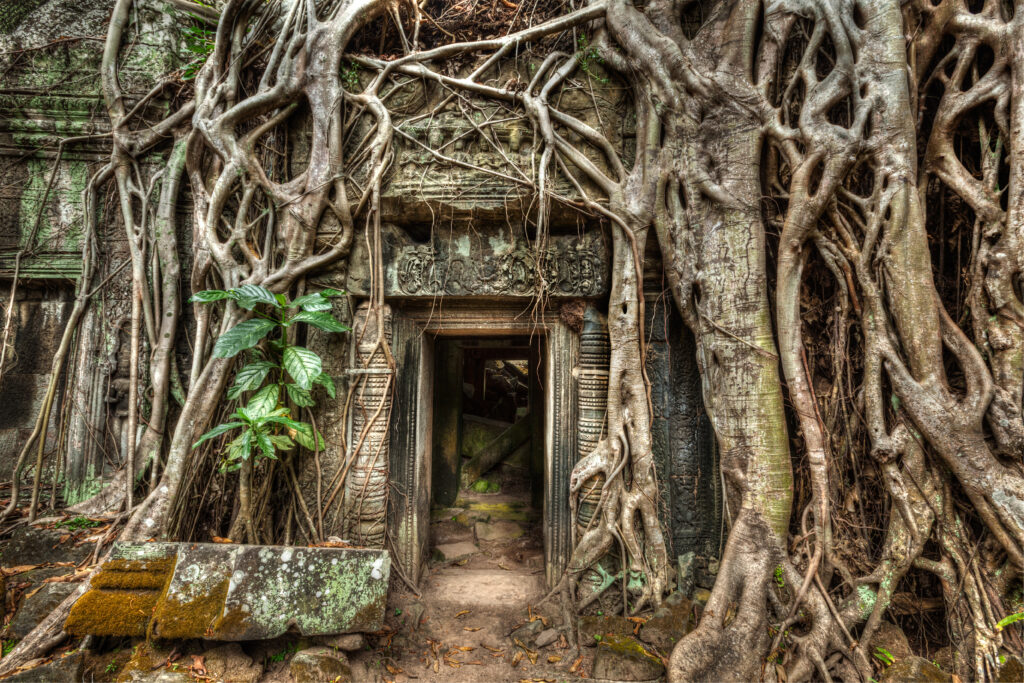
It's one of the most beautiful ruins left in the world: built in the 12th century, this Buddhist temple is one of the most incredible on the Angkor site. Built during the reign of Jayavarman VII, it served as a monastery and university. It is surrounded by a large enclosure and features a gopura decorated with the 4 typical Angkor faces at each cardinal point. There are corridors and moats, and observing the details of the structure is a divine experience. You're also always surprised to see nature reclaim its rights, notably the enormous roots of trees known as fromagers, which in places invade the monument. Angkor Wat is a must-see when visiting the country!
3. Phnom Kulen, north-east of Angkor
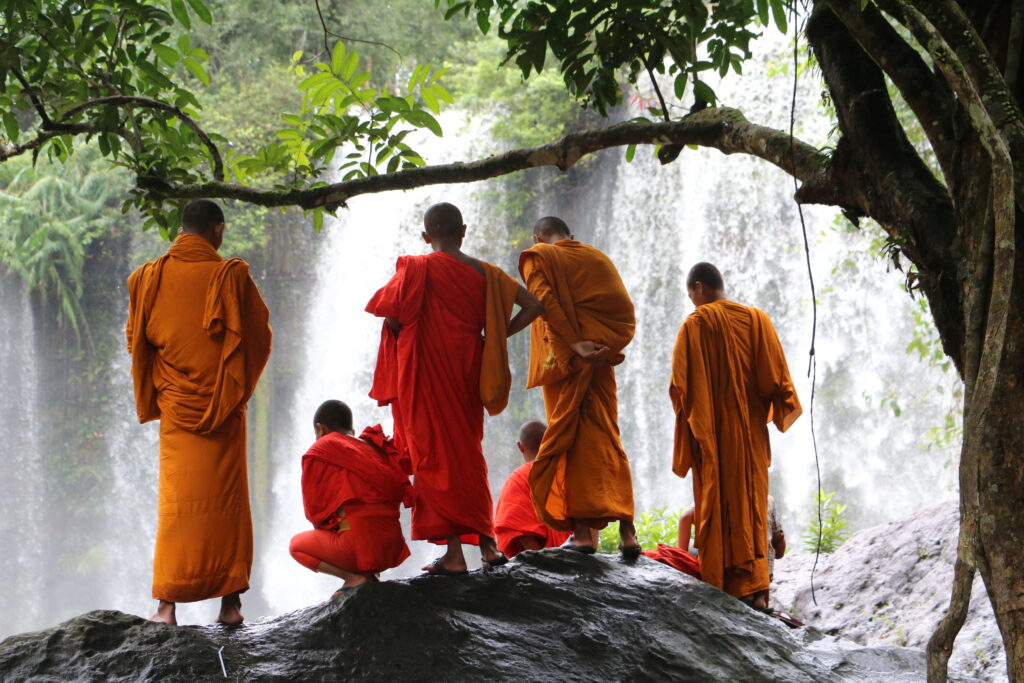
Located northeast of Angkor at an altitude of 487 meters,the Phnom Kulen massif is home to the springs of the rivers that irrigate the ancient city. It is revered by the Khmers as a sacred site. At the top of the mountain, a small temple houses a reclining statue of Buddha. One of Phnom Kulen's major attractions is the River of a Thousand Lingas and its magnificent waterfalls . It's called the River of a Thousand Lingas because of the thousands of lingas or stone tablets fashioned by the Khmers that line the riverbed. You can also bathe in the majestic waterfalls, an experience that immerses you in local life.
Explore Phnom Kulen National Park with this full-day excursion that takes in the Kulen waterfall, Kbal Spean and the world-famous Reclining Buddha.
4. Banteay Srei, "the citadel of women
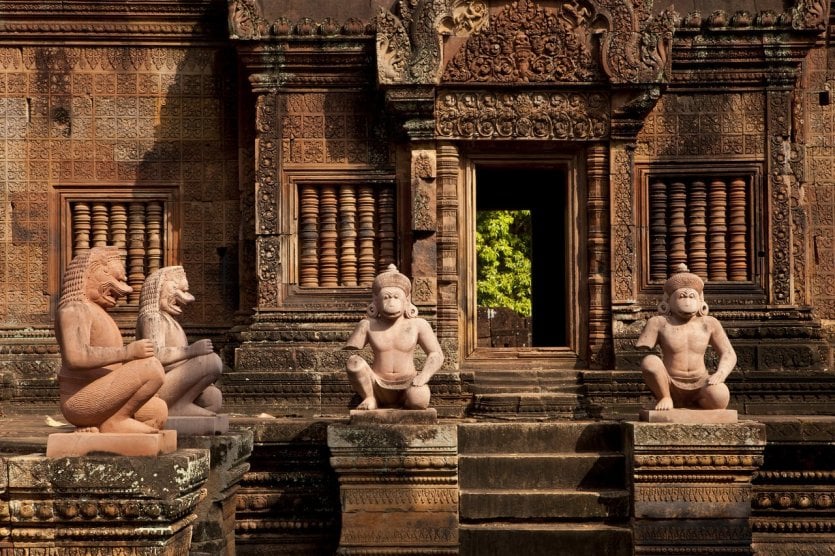
Just 20 km from Angkor, Banteay Srei is well worth a visit. A true jewel, its pink sandstone and laterite architecture is incomparably refined, thanks in particular to its decorations and engravings depicting Khmer mythology. Built in the 10th century, Banteay Srei is dedicated to Shiva - in fact, it stands on the site of the ancient city of Isvarapura, or City of Shiva. It was here that André Malraux, fascinated by the temple's beauty, was caught looting it.
Explore the ancient capital of the Khmer Empire by booking this day trip to Banteay Srei with an optional guide to learn more about Khmer rituals and beliefs.
5. Tonle Sap and lake life
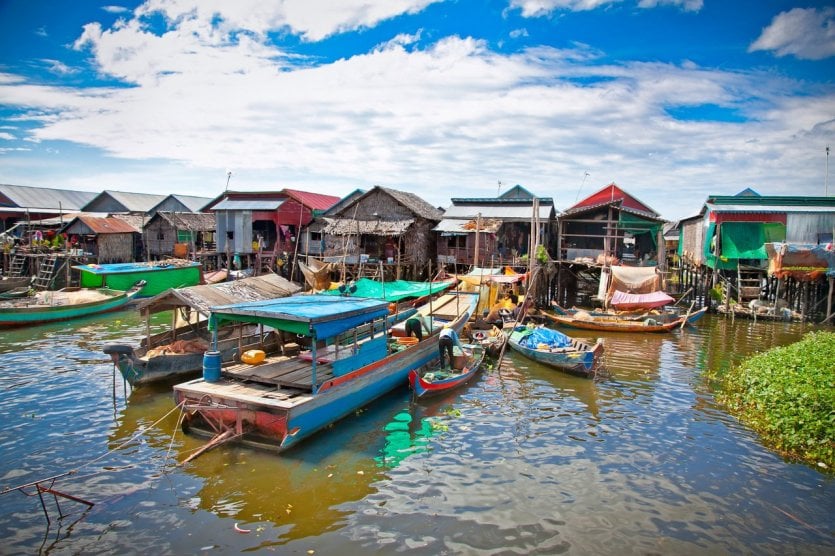
Classified as a biosphere reserve by UNESCO, the Tonle Sap lake constitutes a hydrological system that is unique in the world: a natural barrier against flooding from the Mekong, it serves as a spillway for the overflow of its waters during the rainy season. The Tonle Sap boasts a remarkable ecosystem, with over 100 species of aquatic birds and 300 varieties of fish. Many Cambodians live on the lake, and renting a boat to discover these floating villages is an experience like no other.
We recommend booking this tour to visit one of the island's famous floating villages, Kompong Phluk, and experience local life as you explore the stilt houses, fisheries and floating hospital.
6. Sihanoukville, a seaside resort
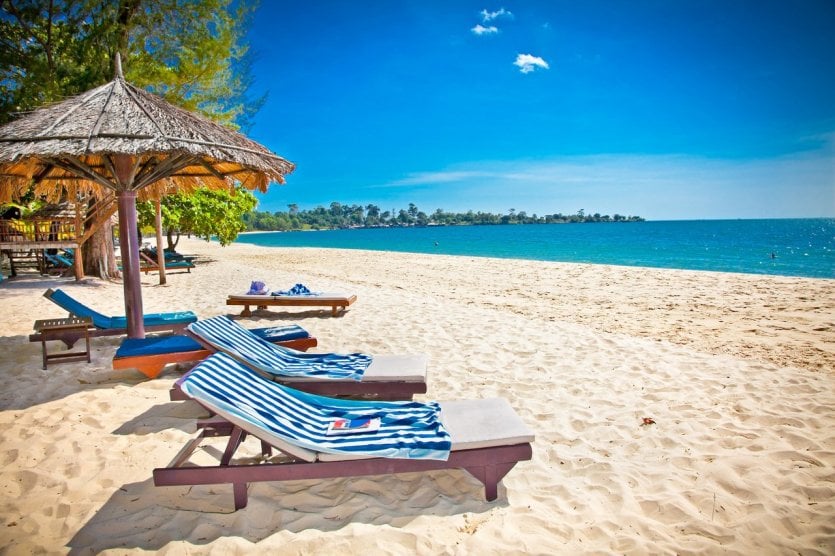
Located 240 km south of Phnom Penh, Sihanoukville is Cambodia's only deep-water seaport and its main seaside resort. Among its most famous beaches are Ochheutal Beach and its festive nights, Otres Beach and its bohemian atmosphere and lndependence beach, the ideal spot to enjoy the sunset. More typical than the main islands in the south of the country, Sihanoukville is Cambodia's ultimate relaxation stopover.
7. The temple of Preah Vihear, an architectural treasure
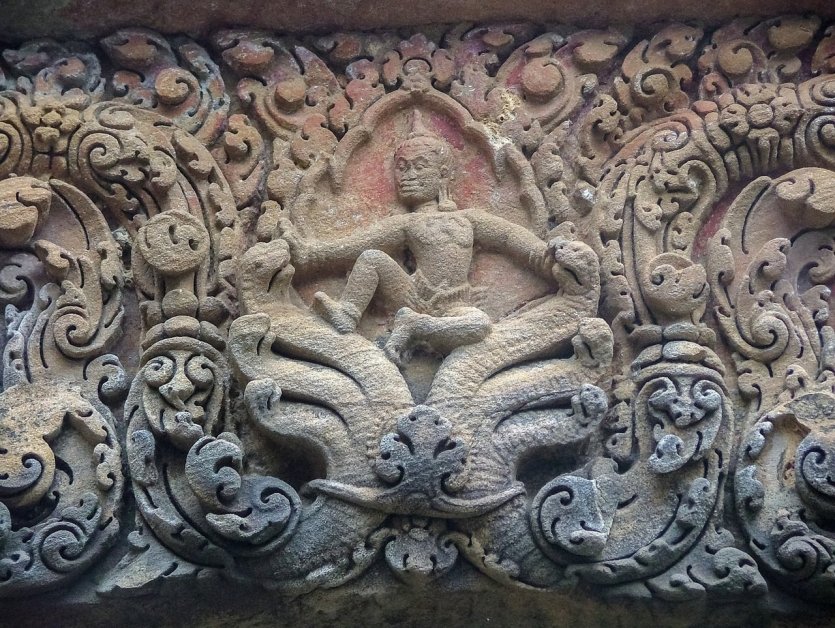
Located in the northern plains of Cambodia, not far from the Thai border, the temple of Preah Vihear was built in the early 11th century, but its history dates back to the 9th century, when a community of hermits lived on the site. Its original architecture has earned it UNESCO World Heritage status. In fact, the temple was built on a rectangular plan, over 800 m long, with a system of causeways and stairways linking several sanctuaries.
We recommend you book this guided day trip to Preah Vihear and Koh Ker temple and Koh Ker temple: a day rich in history, breathtaking panoramas and unforgettable memories!
8. Phnom Penh, the bustling capital
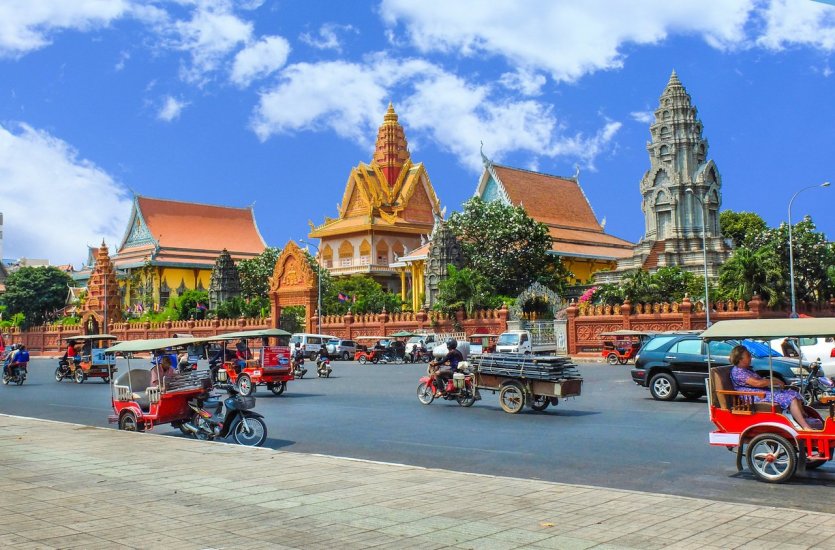
Cambodia's capital since 1866, Phnom Penh is the country's largest city and one of Asia's must-see capitals. With its lively evening life, Phnom Penh boasts many monuments of interest, making it much more than just a stopover on the way to Angkor. Don't miss the Royal Palace and the Silver Pagoda, built in the 19th century when Phnom Penh became the capital. As the residence of the King of Cambodia, the Royal Palace of Phnom Penh is one of the most beautiful palaces in the world: a jewel of traditional Khmer inspiration with magnificent glazed tile roofs. Sculpted pediments, columns and frescoed galleries are other treasures to be immortalized. Wat Phnom is also a must-see, especially for the lovely walk it offers down its hill. To make sure you don't miss a thing, book your tour of Phnom Penh's hidden highlightshere .
9. Authentic Battambang
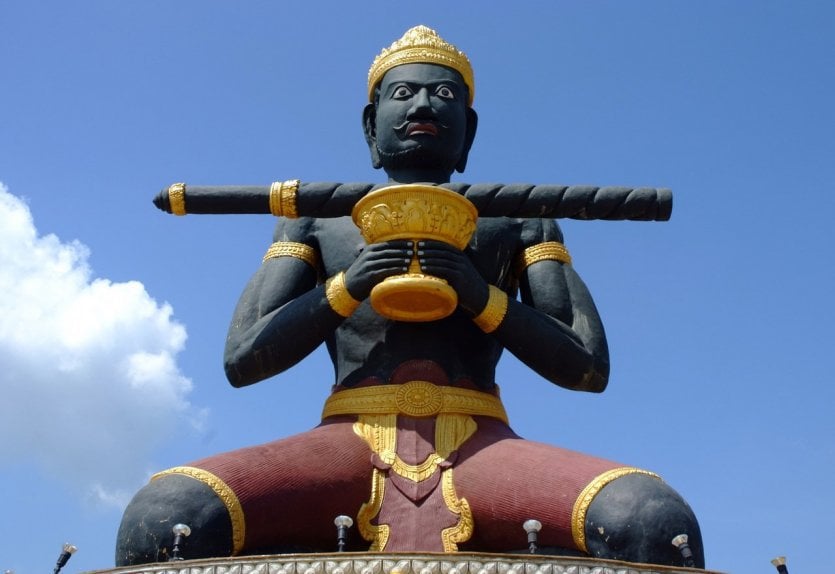
The first thing that strikes you about Battambang is its tranquility. This stopover in the countryside is a welcome change from bustling Phnom Penh. To get around, you can take the bamboo train, an unusual means of transport consisting of a bamboo platform that moves along a railroad track. Equally unusual is the bat cave, where millions of bats emerge from the caves to feed at around 6 p.m. - an impressive sight!
Discover the culture and history of Battambang on this guided tour explore the city on board a tuk tuk, travel on a bamboo train and visit the Death Cave and Bat Cave.
10. Kampot, a peaceful stopover
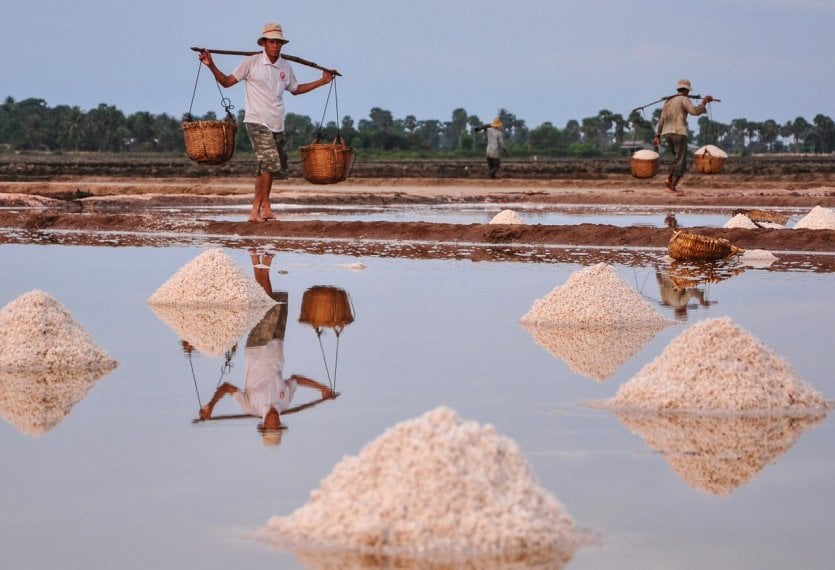
Salt, pepper, rice and durians are among the many crops grown in Kampot, Cambodia's vegetable garden. This typical town will appeal to travelers in search of authenticity, who will appreciate a two-wheeled tour of the stilt hamlets of Trey Koh Island, between rice paddies and salt marshes. Bokor National Park, with its dense vegetation, is also a very pleasant ride, as is the center of Kampot, with its architecture dating from the 1920s.
11. From amok to lok lak, a sensory journey
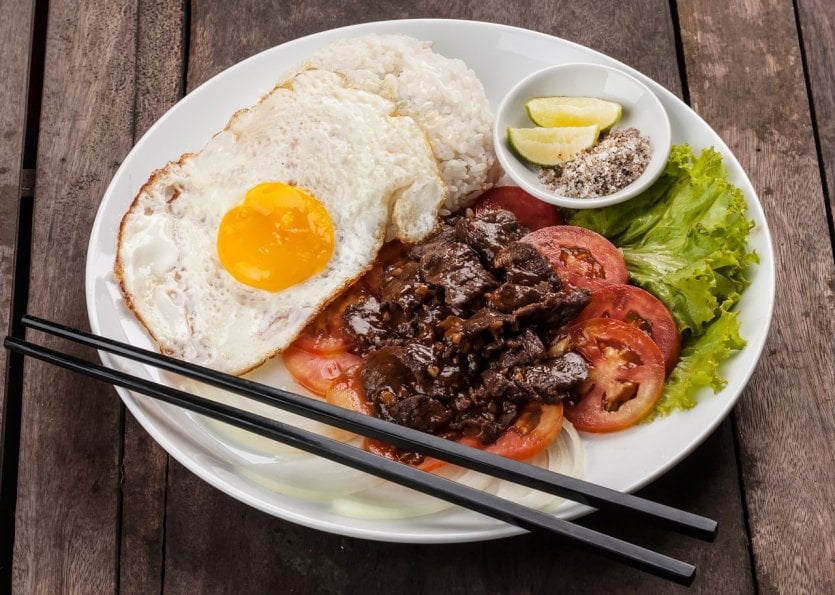
Do you know Cambodia 's two main specialties? Amok is the national dish, and you'll find it in every town in the country. Made with chicken or fish, cooked in a banana leaf cup and covered with thick coconut milk, it's a real delicacy! Also very popular, beef lok lak is marinated meat served with glutinous rice. Invigorating and tasty, Cambodian cuisine won't leave you hungry!
And if you're feeling adventurous, you can also try one of the world's most unusual culinary specialities: specialities from the Skuon region, garlic-fried tarantulas are apparently delicious!
12. The southern islands, an almost secret paradise
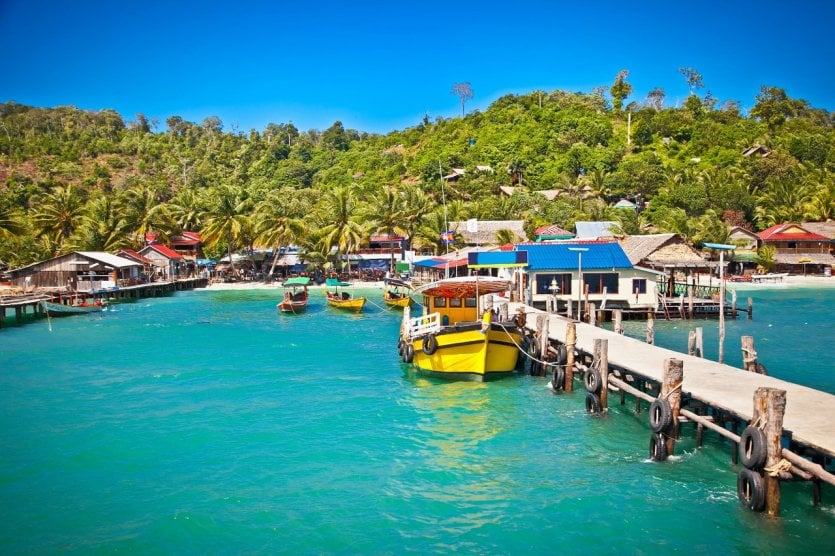
Off the coast of Sihanoukville, three islands face the south of Cambodia. Koh Rong is the largest and least wild, with a lively nightlife and sublime Long Beach. For greater tranquility, we recommend Koh Rong Samloem which is still in its infancy as far as tourism is concerned, so it's a real pleasure to enjoy its crystal-clear waters. Last but not least, Koh Ta Tiev is the most secret island: a real Robinson Crusoe experience awaits you!
13. Roadtrip in the Cardamoms
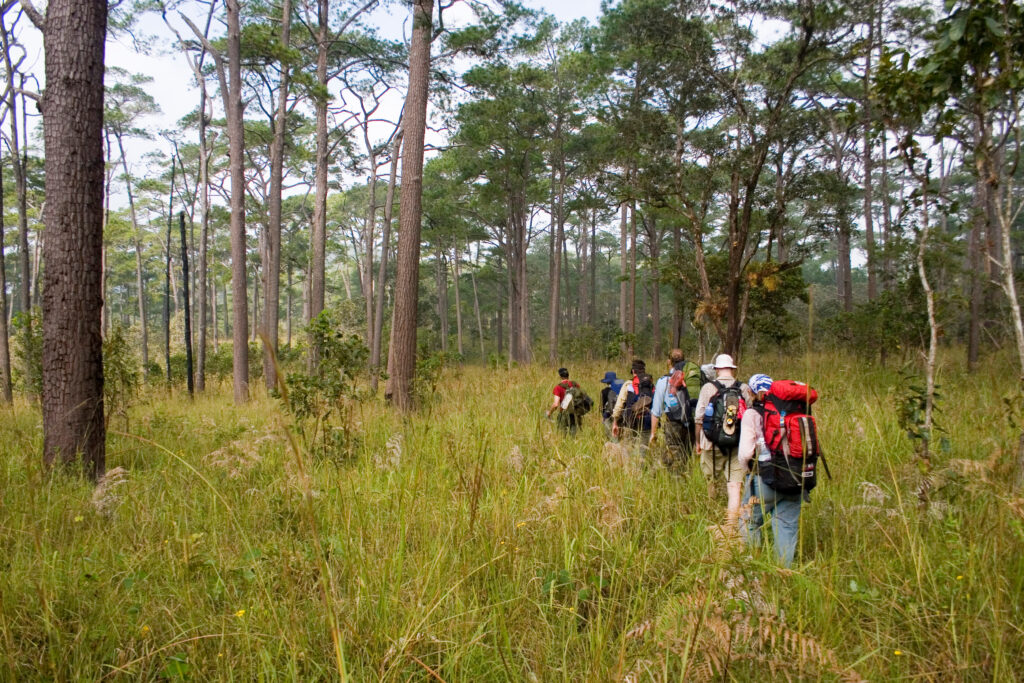
Would you like to explore Cambodia through a diverse palette of landscapes including jungles, pine forests, rice paddies and green hills? Whether hiking or motorcycling, the Cardamomes offer a real escape from conventional itineraries, allowing visitors to spend the night in the heart of the jungle, lulled by the melodies of birds and gibbons. Along the way, you'll have the chance to stop off at local shops and villages such as Chi Phat, which offer an immersive experience of Cambodia's authenticity.
14. What to do in Cambodia Visit the small village of Pursat
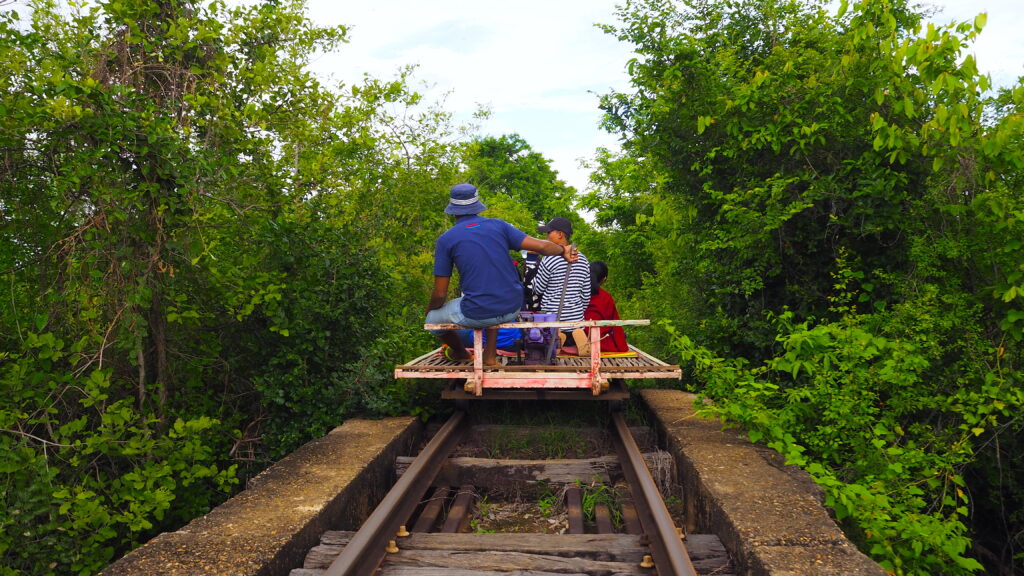
Want to get away from the crowded tourist areas? Pursat is a small country town renowned for its stonemasonry and marble craftsmanship, offering the opportunity to watch the artisans of the sculpture school at work. Nearby, you can take a pirogue trip on the Tonlé Sap to explore the fascinating floating village of Kompong Luong, or try out the Bamboo Train. Made up of bamboo platforms loaded with goods, this train moves along rails powered by a motor. A unique experience!
15. Stop off in the peaceful village of Kratie
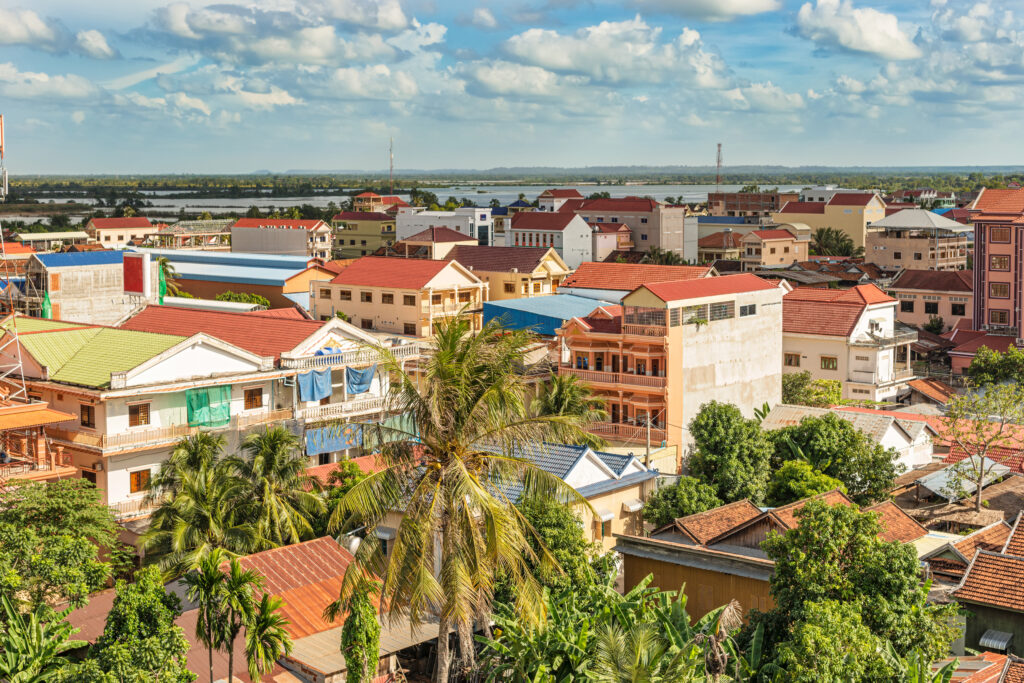
The pretty village of Kratie is known as the ancient city of the Chenla kingdom , where King Bhavavarman reigned. Highly coveted, the city was invaded by the Chams, the Siamese and the French, and you'll discover relics testifying to its past wealth as well as an urban landscape marked by the French colonial style. Kratie is known today for its beauty and tranquillity, and its "zen" atmosphere attracts visitors from all over the world. We recommend a twilight stroll along the road around the river, where you'll see some beautiful traditional Khmer houses.
16. Dolphin-watching in Kampi
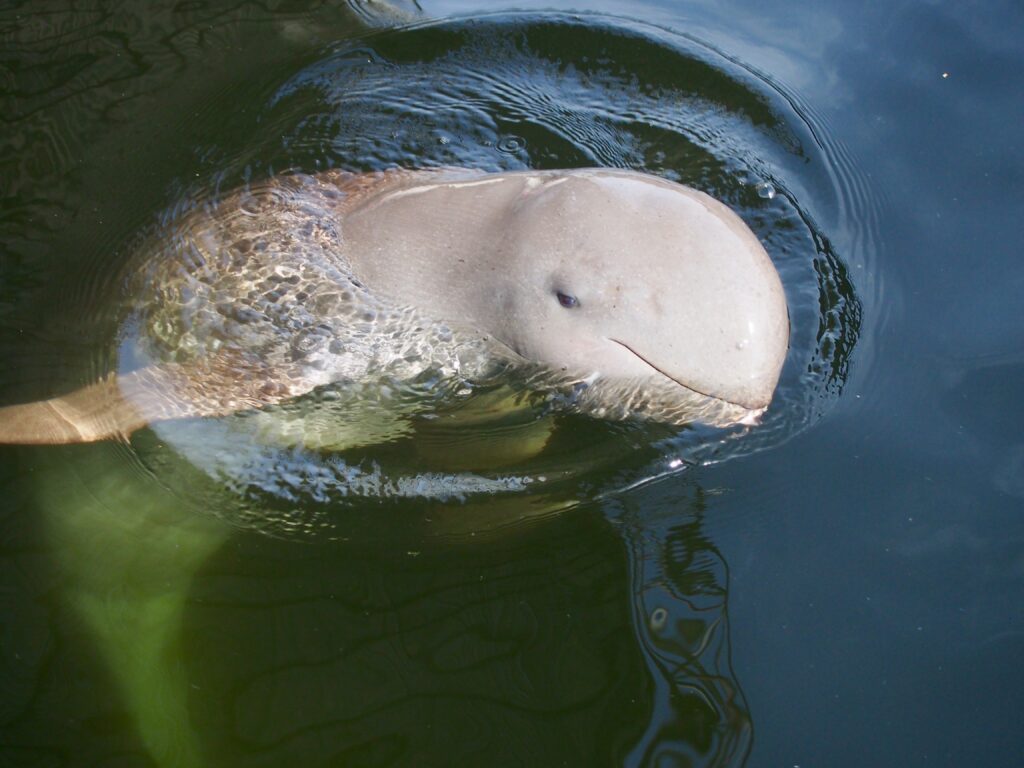
Located around 20 km north of Kratie, the small village of Kampi, made up of dozens of small islands, is an ideal place to go and observe the rare freshwater Irrwaddy dolphins, also known as Mekong dolphins. These dolphins are famous for their unique appearance, with a rounded head and no elongated beak. The observatory is now run as an ecotourism project by the local community. You can board small local boats to watch the dolphins swim, but avoid disturbing them or getting too close. Nearby, you can visit the Mekong Turtle Conservation Centre and lotus farms.
17. Climb to Phnom Sombok temple
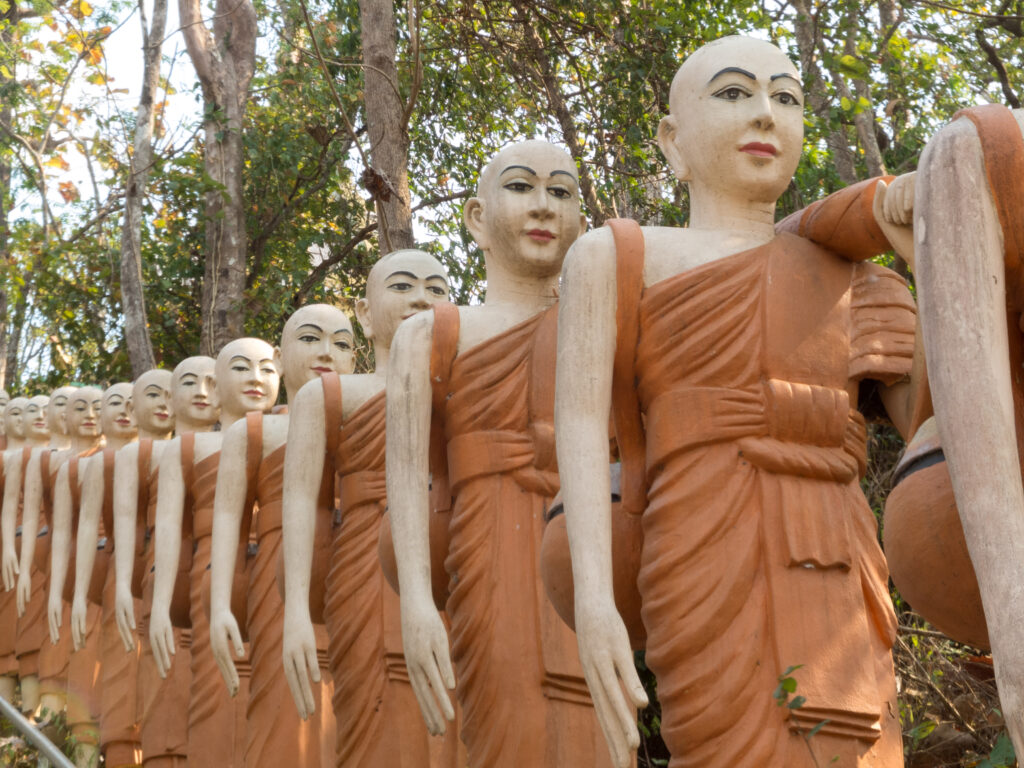
Perched on a hill in the heart of a lush forest north of Kratie, this temple is a must-see if you're in the area! The 300 steps are lined with colorful statues of brown-robed monks carrying their alms bowls to a picturesque pavilion. The serene atmosphere of this place offers a magnificent panoramic view of the region, and you can also see monkeys and magnificent birds.
18. Visit the village of Sambor and its 100-column temple
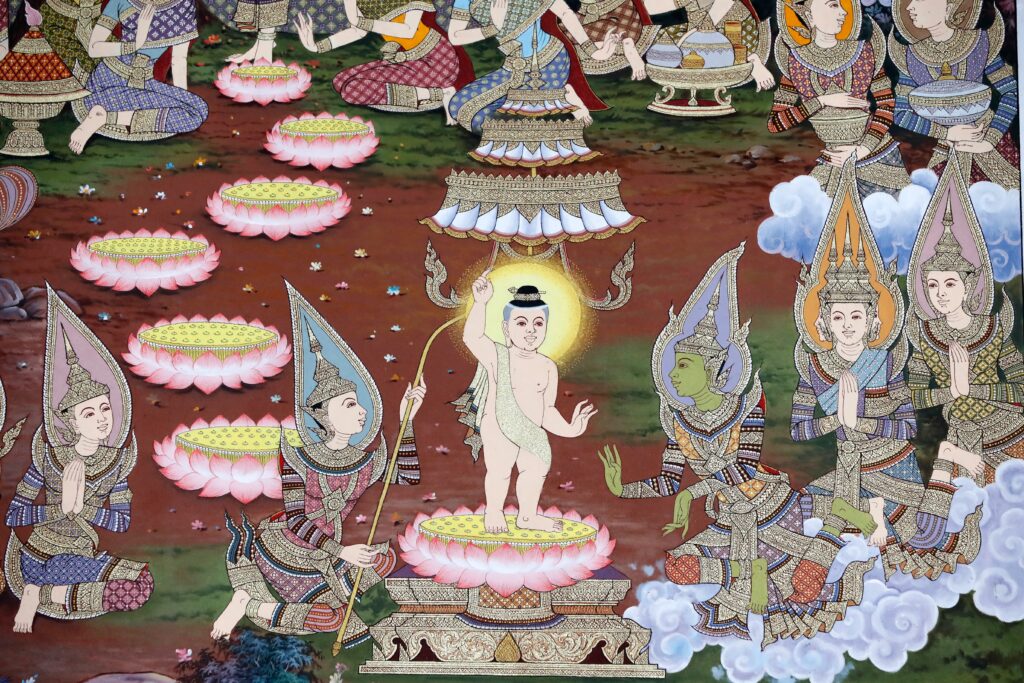
Located around 40 km north of Kratie, the village of Sambor is one of the first capitals of the Chen La kingdom. It is best known for its Wat Sor Sor Muy Roi temple, or Temple of the Hundred Columns. The original temple, famous for its hundred columns, was completely destroyed by the Khmer Rouge and a modern, colorful temple with 108 columns was erected in its place. It is the largest in Cambodia and an important pilgrimage site in the region. Inside you'll see murals recounting traditional Buddhist legends and stories.
19. Visit the temples of Sambor Prei Kuk
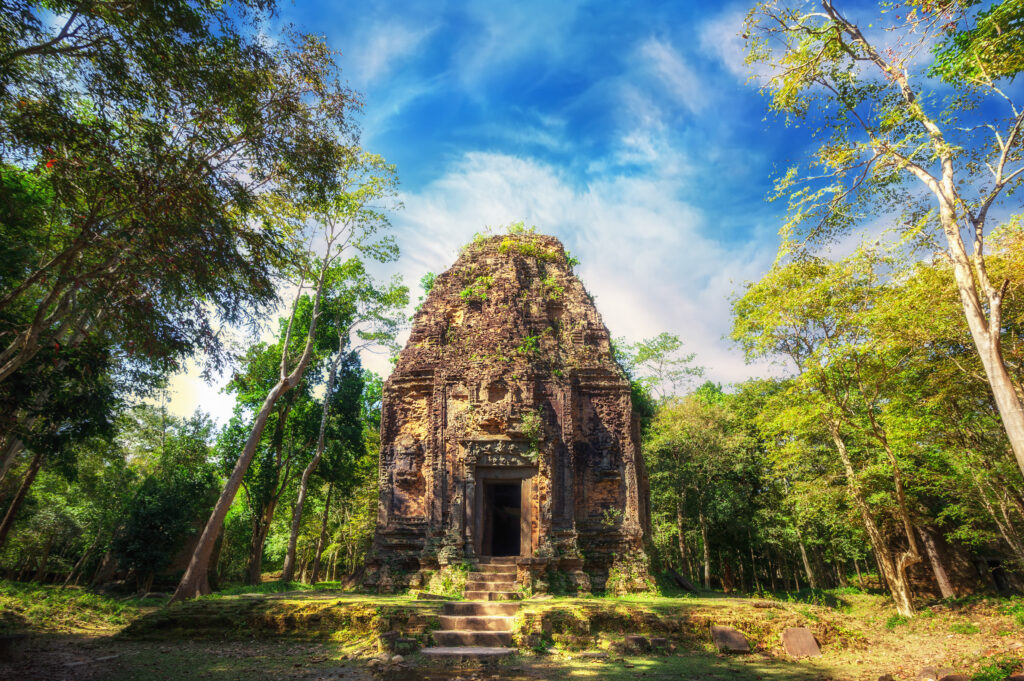
The archaeological site of Sambor Prei Kuk is exceptionally rich! A UNESCO World Heritage site, Sambor Prei Kuk is home to more than a hundred pre-Angkorian brick temples dating back to the 7th century and set amidst lush forest. Each building features fascinating architecture, characterized by delicately carved motifs and detailed decoration. These temples, dedicated principally to the goddess Shiva, reflect the artistic elegance and technical mastery of the craftsmen of the time . The peaceful atmosphere of Sambor Prei Kuk makes it an ideal place for contemplation and discovery.
Tempted by a vacation in Cambodia? Take advantage of a discount by booking your travel insurance here, and leave with peace of mind!
What to do in Cambodia in 10 days
How long does it take to visit Cambodia? Exploring Cambodia in 10 days offers a fascinating opportunity to discover the cultural, historical and natural wealth of this Southeast Asian country. Here's a suggested itinerary for an immersive experience:
Days 1-3: Siem Reap and the Temples of Angkor
- Begin your journey in Siem Reap, the gateway to the temples of Angkor.
- Spend two days exploring iconic temples such as Angkor Wat, Bayon and Ta Prohm.
- Admire the spectacular sunrises and sunsets over Angkor Wat.
Days 4-5: Battambang
- Set off for Battambang, a charming provincial town.
- Explore the surrounding countryside on the Bamboo Train and visit traditional villages.
- Discover Battambang's historical relics, including the Ek Phnom temple.
Days 6-7: Phnom Penh
- Travel to the capital, Phnom Penh, to immerse yourself in Cambodian history.
- Visit the Tuol Sleng Genocide Museum and the Choeung Ek Killing Fields.
- Explore the Royal Palace and the Silver Pagoda.
Days 8-9: Kampot Province and Kep
- Visit Kampot, a peaceful riverside town.
- Discover pepper plantations, the caves of Phnom Chhngok and Bokor National Park.
- Head to Kep for its tranquil beaches and sample fresh crab at the crab market.
Day 10: Sihanoukville beaches or Koh Rong island
- Finish your trip by relaxing on the beaches of Sihanoukville or taking a boat to the island of Koh Rong.
- Enjoy the sun, water sports or diving before concluding your Cambodian adventure.
This itinerary offers a balance of cultural treasures, historical sites and natural escapades, providing a complete Cambodian experience in 10 days
What to do in Cambodia in 15 days?
With five extra days, you have the opportunity to deepen your exploration of Cambodia by discovering less-visited destinations and enjoying moments of relaxation. Here's how to extend your itinerary:
Days 11-12: Mondulkiri
- Travel to Mondulkiri, an unspoilt mountain province.
- Meet elephants in ethical sanctuaries.
- Explore waterfalls, such as the Bou Sraa waterfall.
Days 13-14: Ratanakiri
- Head to Ratanakiri, a province offering a unique cultural experience.
- Meet the indigenous communities, particularly the hilltribe minorities.
- Explore the volcanic lake of Yeak Laom and the Ea Koun waterfalls.
Days 15-16: Koh Rong Samloem unspoilt beaches
- Take a boat to Koh Rong Samloem, a neighboring island to Koh Rong.
- Relax on pristine beaches and explore the marine life during diving or snorkeling sessions.
- Enjoy a peaceful getaway from the hustle and bustle.
This five-day extension allows you to explore less touristy areas of Cambodia, offering a more authentic experience and close contact with nature and local culture. It also allows you to relax on the beautiful beaches of Koh Rong Samloem, adding a touch of serenity to your Cambodian adventure.
What to do in Cambodia in 3 weeks?
With an extra week, you can explore more remote areas, take part in special activities and immerse yourself even more deeply in Cambodian culture. Here's how to extend your itinerary over a three-week period:
Days 17-18: Banlung, Ratanakiri
- Continue your exploration of Ratanakiri with a visit to Banlung, the provincial capital.
- Trek through tropical forests, visit Cha Ong Falls and explore the volcanic crater of Yak Lom.
Days 19-20: Kratie and the Irrawaddy dolphins
- Travel to Kratie, a peaceful town on the banks of the Mekong River.
- Take a boat trip to see the rare Irrawaddy dolphins in the Kampi region.
Days 21-22: Koh Kong's unspoilt beaches
- Travel to Koh Kong, an unspoilt province on the Thai border.
- Explore the biodiversity of Koh Kong National Park, zip-line through the canopy or relax on the tranquil beaches.
Days 23-24: Preah Vihear
- Head for the UNESCO World Heritage site of Preah Vihear temple.
- Admire the panoramic view from the hill overlooking the Cambodian and Thai plains.
Days 25-26: Kompong Thom and the temples of Sambor Prei Kuk
- Visit Kompong Thom, a peaceful town of temples and traditional villages.
- Explore the pre-Angkor temples of Sambor Prei Kuk and soak up Cambodia's ancient history.
This three-week itinerary extension offers you an even deeper immersion in Cambodia's diversity, with unique cultural and natural experiences. You'll discover lesser-visited sites and enjoy the richness of Cambodia's biodiversity and culture.
Is it better to visit Cambodia or Vietnam?
The choice between visiting Cambodia or Vietnam largely depends on individual preferences, specific interests and the type of experience you're looking for. Both countries are popular with backpackers and offer unique experiences, each with its own charms. Here are a few points to consider to help you decide:
Cambodia :
- Angkor Temples: Cambodia is famous for the Angkor Temples, an outstanding archaeological site with ancient temples, including the famous Angkor Wat.
- History and culture: The country has a rich and sometimes harrowing history, notably linked to the genocide perpetrated by the Khmer Rouge. Visits to Phnom Penh, such as the Tuol Sleng Museum and the Killing Fields, offer an important historical perspective.
- Unspoiled nature: Regions like Mondulkiri and Ratanakiri offer unspoiled nature and an off-the-beaten-track experience.
Not sure why? Check out our dedicated article "5 reasons to take a trip to Cambodia!"
Vietnam:
- Halong Bay: A natural wonder, Halong Bay, with its emerald karst rock formations, is one of Vietnam's most iconic destinations.
- Cuisine: Vietnamese cuisine is renowned for its delicacy and diversity. Dishes like phở and banh mi are a must.
- History and City Life: Vibrant cities like Hanoi and Ho Chi Minh City offer lively city life, vibrant markets and a rich history, including the Vietnam War period.
To help you choose, take a look at our dedicated article "What to do in Vietnam? The 21 most beautiful places to visit!"
Tips for choosing:
- Personal interests: If you're passionate about ancient history and temples, Cambodia may be more suited. If cuisine, city life and spectacular natural scenery are your priorities, Vietnam might be the better choice.
- Budget and trip duration: Consider your budget and the time you have available. Both countries can be explored in depth, but if you have limited time, choose according to your priorities.
Ultimately, whether you choose Cambodia or Vietnam, you're guaranteed a rich and memorable cultural experience. Many travelers also choose to combine the two destinations for an even more complete adventure.


